How To Remove A Tick Head Effectively | A Step-By-Step Guide
If you want to get rid of these pesky parasites quickly, keep a sterile tweezer handy.
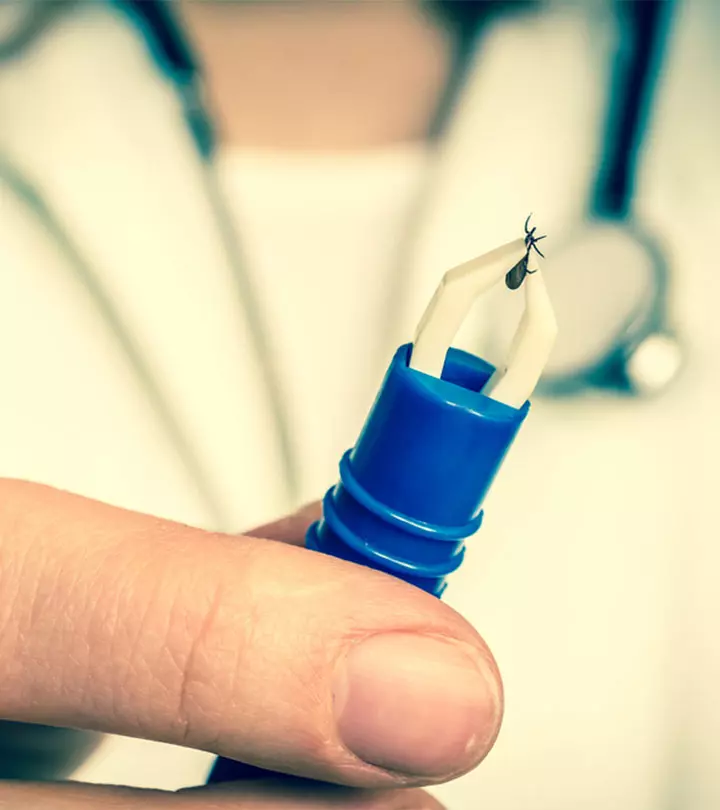
Image: Shutterstock
Ticks are parasites that love warm-blooded hosts, especially humans and their furry friends. While the tick body easily detaches during the removal process, it is tough to remove a tick head if you are unaware of proper techniques. It is because the tick strongly grips the host’s body with its mouth and tends to remain stuck. Tick bites are usually harmless, but they carry a risk of infection. That is why you must ensure the tick head is properly removed. If you have spotted a tick on your pet’s body or contracted it, this article explains the proper ways to remove tick heads safely. Keep reading to learn more.
 Trivia
TriviaIn This Article
How To Remove A Tick: Do It Easy And Quick
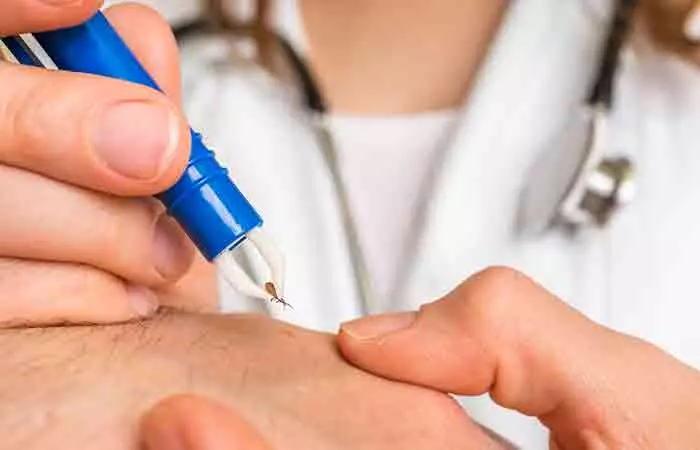
The only reason you may be asking how to remove a tick from a human is that you have got one on you or on someone close to you. Don’t worry because there is a trick to remove ticks easily! But before you get into that, you need to be sure that what you have encountered is indeed a tick. How do you do that? See if it:
- Looks like a spider, with eight legs.
- Is attached to the skin.
- Is getting fatter, sitting there and sucking away merrily.
If you have ticked yes on all or most of the above, you have definitely got a stubborn tick on your hands. Now, you can proceed to the following steps of tick head removal.
- Step 1: Get A Tweezer
So, this is the most important step. If you want to know how to remove a tick head, you need to be ready with your arsenal, and the tweezer is your greatest weapon. This tick-removal tool must have fine tips. Anything too wide or too blunted won’t be able to hold onto a tick that’s not yet engorged, and you take the risk of decapitating it.
- Step 2: Sterilize Your Tweezer
Use rubbing alcohol or a traditional 5-minute boil to get your tweezer sterilized. Alternatively, you can sterilize it by washing it in soapy hot water. This step is important to avoid infecting a tick bite.
- Step 3: Grab The Tick Below The Head
Now, here’s the tricky part, so you may want to pay attention. You have to get the angled end of your tweezer close to the tick head stuck in the skin and grab hold of the part below the head closest to the skin. Compressing the head can rupture it and spread contaminated fluids. If you grab the body of the tick, you run the risk of pulling out the body but get the tick head left in the skin. Try to angle your hands so that you have a firm grip on the tick. Since this step is very important, get someone to help if you can’t reach the spot yourself.
- Step 4: Pull Out The Tick Firmly
Finally, use a straight, smooth, and firm tug to get the tick out, including the head and squirming legs.
Congratulations, the tick is off. But hold on here before you breathe a sigh of relief. A lot of times, even with the best efforts, the head gets separated in this tug of war. So, how to tell if the tick head is still in the skin or if your mission is a success? Well, there’s only one way to find out.
Key Takeaways
- Ticks are parasitic insects that prefer warm-blooded victims.
- Tick bites are normally not harmful, although they are vectors or carriers of serious illnesses like Lyme disease, Rocky Mountain spotted fever, rickettsiai A tick-borne disease that causes fever, muscle pains, headache, and rashes on the extremities and the trunk. , ehrlichiosisi A tick-borne disease that causes fever, muscle aches, vomiting, confusion, and rashes within 5 days of biting, especially in children. , and tularemiai A rare tick-borne disease that causes skin ulcers, sore throat, mouth sores, diarrhea, or inflamed eyes. to name a few.
- To remove a tick head, you need to get a sterile tweezer, grab the tick below the head, and pull it out.
- Then, wipe the region with rubbing alcohol or soap and water to reduce the chances of infection.
Is The Tick Head Out?
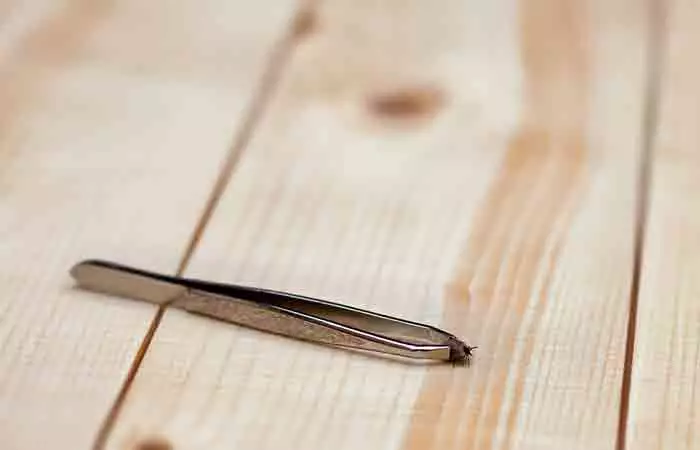
When you look at what you have pulled out, you should be able to see the head of the tick and its squirming legs. You will know you have succeeded at removing the tick head if the tick is alive and moving, or if you can spot the head. Otherwise, you have to figure out how to remove a tick head that’s embedded in the skin. And, that is a little tricky.
So, what to do if the tick head is stuck in the skin? Well, you have 3 options:
- Option 1: Go Back In With The Tweezer
With only the body of the tick out, your job remains incomplete and you need a strategy for how to get a tick head out. The most obvious course of action is to go back in with the tweezer. In the best-case scenario, the tick head is still visible on the skin. You need to be firm and tug it out in a strong, upward motion.
- Option 2: Change Your Weapon- Use A Needle (The CDC and the American Family Physician do not recommend using sharp instruments at home like needles to dig ticks out).
The tick head may be too small to be grasped by a tweezer if part of it has broken off
. In that case, you can use a sterilized needle. Use the point of the needle to widen the hole where the tick is buried. Take care not to break open your skin. Once your needlepoint is touching the tick head, pull it out gently. You should be able to see it on your needle once it’s out.
- Option 3: Do Nothing, Let It Be
Some people just let the tick head be, especially if it is too small to remove with a tweezer or if it has broken apart under the skin.
Let us learn about the signs to identify whether a tick head is left behind.
The third option brings us to a pertinent question— what happens if you don’t get the head of a tick out? Let’s find out.
Symptoms Of A Tick Head Left In The Skin
Even when you feel you have removed the tick, you should inspect the skin as closely as you can. Using a magnifying glass may help in this regard. If the head is still present, you may notice a tiny, dark black dot on the skin. The color around the affected area may also start changing after some time. The tick parts may also have a reddish-black color. If the skin appears red, irritated, and firm, and you detect a small lump beneath it, it suggests that the tick may be embedded more deeply. In such cases, you may have to consult a dermatologist to get it removed.
This brings us to a pertinent question— what happens if you don’t get the head of a tick out? Let’s find out.
Is It Too Risky To Let The Head Stay In Your Skin?
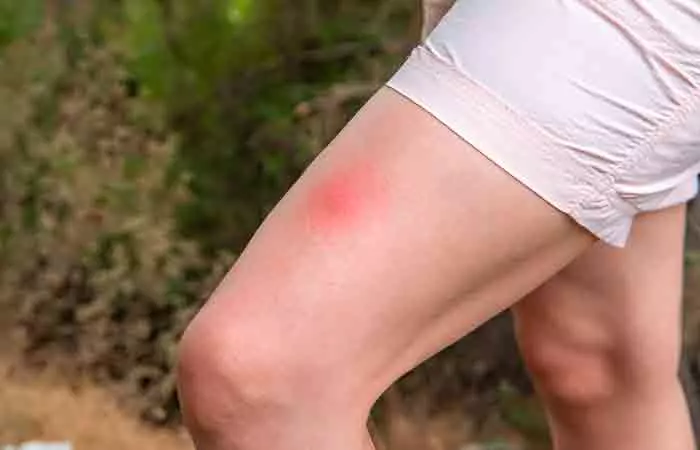
A tick bite may cause Lyme diseasei A tick-borne disease that causes skin rashes and flu-like symptoms, which can spread to the heart and the nervous system. in some cases, but a tick head under the skin does not (1). However, it is still risky to not know how to remove a tick head and let it be under your skin. That’s because the mouth of the tick can spread fungal, parasitical, viral, or bacterial infection in case the tick is already infested (2).
Another risk factor is a type of inflammation (called foreign body-type granuloma) from the bits and pieces of the tick’s head that are left behind under the skin. That’s because your body is not able to digest the remaining tick head bits and sends your immune system to wall them off, treating them as foreign particles and dangerous (3).
With luck on your side, a tick head may fall off by itself if you have let it be, but then again, it may not. The best thing to do is try as carefully as possible to get the entire tick out in one piece using a tweezer or a needle. Or in the worst-case scenario, try to get as much of the remains of the tick’s head off using a sterilized needle.
Whether you have gotten the tick out in one piece, or multiple pieces, your job’s not complete yet. There is something else that you need to do before it’s all done and dusted. Let’s see what.
Tick’s Out, What’s Next?

Getting the parasitic bug out is a tremendous relief, but you also need to know what to do after removing a tick to lower your risk of infection on the site of the bite. For that, you need to thoroughly clean the area where the tick was lodged with rubbing alcohol or soap and water. For added protection, use an antibacterial ointment on the bite (2).
You are free of the tick and have followed all the necessary steps. But there’s still one looming question: What to do with the tick? Let’s see.
Don’t Throw Away The Tick You Pulled Out, At Least Not Yet
You may feel tempted to flush the tick down the toilet, or if you are ticked off, to squash it between your fingers. The former action is still fine, but don’t do the latter. You don’t want to spread what may be pathogen-laden internal fluids of the tick all over you. The best way to deal with a tick that you have removed is to suffocate it using rubbing alcohol. Use a towel soaking with rubbing alcohol and place the tick on it. Ticks are sneaky and can disappear quickly. Also, even a single tick can lead to a tick infestation. So, be cautious.
Some people choose to save the tick for 30 days by storing it along with the towel in a small airtight container. The reasoning behind this is to keep the tick for getting it tested by medical professionals in case any symptoms of Lyme disease like tick bite fever or other tick-borne diseases or infections arise.
A tick bite may cause nothing more than irritation, but in some cases, it can get quite dangerous, especially if the tick is infected. It may lead to the transmission of tick-borne pathogens resulting in serious infections. Let’s see when to call for a doctor after a tick bite.
 Did You Know?
Did You Know?When Should You Call The Doctor?

Even after you have followed all the instructions on how to remove a tick head, and taken care to disinfect the site of the tick bite, you may face some trouble. Please make sure that you give your doctor a call in case any of these things happen:
- The tick bite feels warm to the touch or oozes green or white liquid.
- You get rashes on your body.
- You develop a rash, pain in your joints, stiff muscles, or fever within 30 days of a tick bite. These may be symptoms of Lyme disease (1).
Scott Rennie, a doctor and a blogger, outlines two approaches for post-tick bite management – observing the affected area and considering antibiotics if signs of infection emerge. About removing ticks, he notes, “I don’t recommend attempting to remove little pieces of the tick at home as this can cause skin trauma and scarring (i).”
Keeping in mind the complications a tick bite can lead to, it is crucially important to take measures to prevent a tick bite in the first place. A few simple steps can help keep you protected while you enjoy outdoor activities. Take a look!
Prevention Tips For Tick Bites
Here is what you can do to prevent them:
- Wear long-sleeved shirts and long pants when walking through grassy or wooded areas.
- Stick to clear trails and avoid brushing against tall grass or bushes.
- After being outdoors, carefully check your clothes, skin, and hair for ticks.
- Examine your pets thoroughly, especially around the ears and under the collar.
- Keep your outdoor clothes in a dryer on high heat to kill any ticks hiding in the fabric.
Infographic: Tips For Removing A Tick Head
Spotting a tick on your body can be a bit terrifying. Not only does it suck your blood, but it can also spread serious diseases like Lyme disease. Hence, removing the tick head is important to prevent information and discomfort. Check out the infographic below where we have highlighted five tips to remove a tick head.

Illustration: StyleCraze Design Team
Tick bites may or may not be innocuous, and even if you don’t develop Lyme disease, there is a risk of secondary tick-borne infections (3). They may also lead to several other infections like tick-borne encephalitis. As a result, you must use caution when removing a tick’s head and body from the skin and disinfecting the region. If you can’t get the tick head out, call your doctor and follow their instructions rather than breaking and damaging your skin with a needle or other sharp things. In addition, take effective measures for tick control and tick-borne disease prevention. While strolling in bushy regions or handling dogs and other animals, wear protective clothing as a precaution to avoid obtaining ticks on yourself.
Frequently Asked Questions
What to put on a tick to draw it out?
There is no evidence to suggest that any topical application can help draw a tick out. Common myths include holding a hot match to the skin, petroleum jelly, hydrogen peroxide, and vinegar. However, these may induce the tick to burrow further into the skin. The only recommended way to get a tick out is to use a pair of tweezers to remove it from the skin.
Does a tick bite leave a hard lump?
Yes, a tick bite may leave a rash or a hard lump on the skin, which may appear after a few days have passed since the tick bite. The hard lump is not usually associated with tick-borne illnesses like Lyme disease. However, if you notice other tick-borne illness symptoms like muscle stiffness or fever, contact your doctor immediately.
Will Vaseline get a tick head out?
No, the greasy nature of Vaseline may not help remove the tick head.
Can showers remove ticks?
Showers are only effective in eliminating unattached ticks and may not help remove the tick heads.
Does salt water remove ticks?
Anecdotal evidence suggests that salt water may help remove ticks by dehydrating them. However, more research is required to confirm it.
Can you use essential oils to repel ticks from hair?
Yes, essential oils such as oregano, peppermint, clove bud, and thyme oil may help repel ticks from the hair due to their antibacterial properties.
Illustration: How To Remove A Tick Head Effectively | A Step-By-Step Guide

Image: Dall·E/StyleCraze Design Team
Worried about a tick’s head stuck in your skin? Don’t panic! Watch this enlightening video to explore the truth behind tick heads, their removal, and the body’s natural process. Stay informed and alleviate your concerns!
Personal Experience: Source
StyleCraze's articles are interwoven with authentic personal narratives that provide depth and resonance to our content. Below are the sources of the personal accounts referenced in this article.
i. Tick bites – will I get lyme disease?https://doctorrennie.wordpress.com/tag/how-to-remove-ticks/
References
Articles on StyleCraze are backed by verified information from peer-reviewed and academic research papers, reputed organizations, research institutions, and medical associations to ensure accuracy and relevance. Read our editorial policy to learn more.
- Lyme Disease
https://www.ncbi.nlm.nih.gov/labs/pmc/articles/PMC3652387/ - Skin Manifestations of Tick Bites in Humans
https://www.ncbi.nlm.nih.gov/labs/pmc/articles/PMC5916399/ - Local Reactions to Tick Bites
https://pubmed.ncbi.nlm.nih.gov/18496425/ - Methods of Tick Removal: A Systematic Review of the Literature
https://www.researchgate.net/publication/313316791_Methods_of_Tick_Removal_A_Systematic_Review_of_the_Literature - Tick bites: What are ticks and how can they be removed?
https://www.ncbi.nlm.nih.gov/books/NBK279240/
Read full bio of Dr. Saba
Read full bio of Reevan Vishwas Rego
Read full bio of Anjali Sayee
Read full bio of Monomita Chakraborty





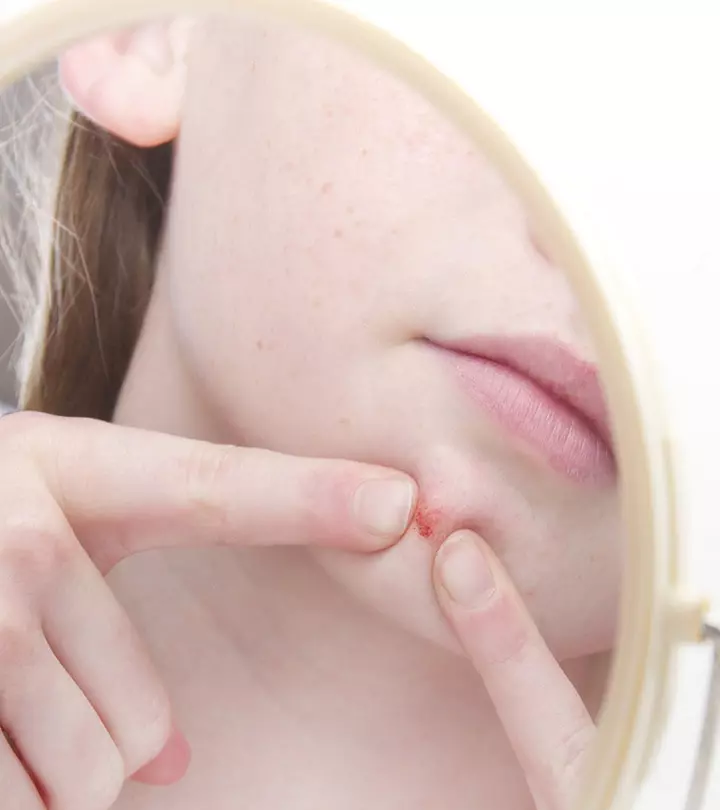






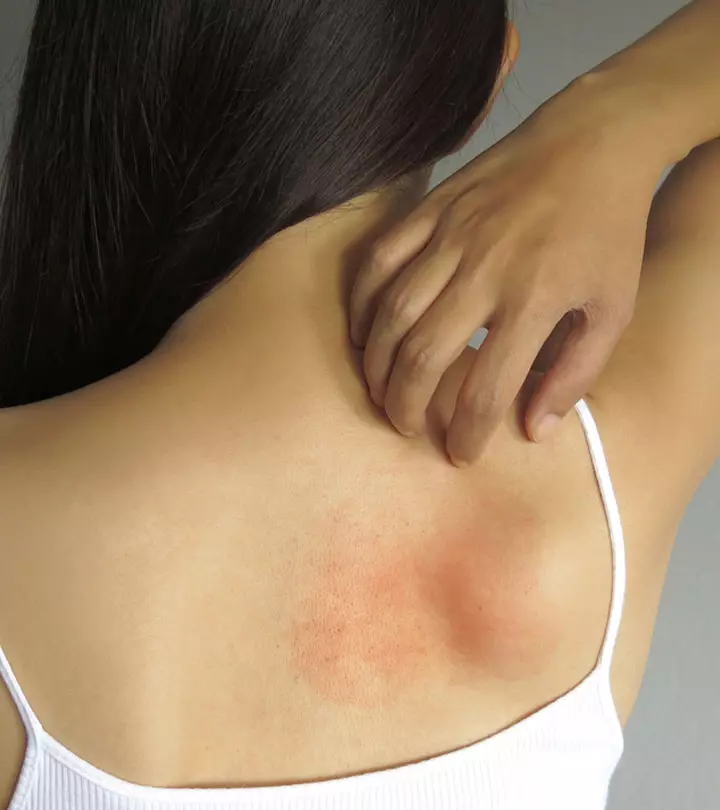







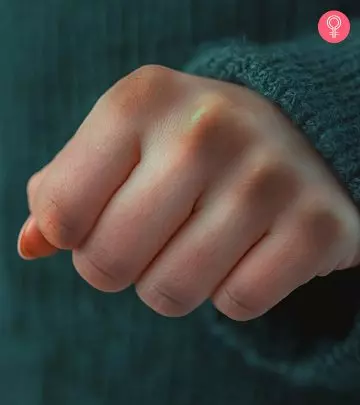





Community Experiences
Join the conversation and become a part of our empowering community! Share your stories, experiences, and insights to connect with other beauty, lifestyle, and health enthusiasts.